Hyundai Elantragt 2016 Owner's Manual

OWNER'S MANUAL
Operation
Maintenance
Specifications
All information in this Owner's Manual is current at the time of publication. However, HYUNDAI reserves the right to make changes at any time so that our policy of continual product improvement may be carried out.
This manual applies to all HYUNDAI models and includes descriptions and explanations of optional as well as standard equipment. As a result, you may find material in this manual that does not apply to your specific vehicle.

CAUTION: MODIFICATIONS TO YOUR HYUNDAI
Your HYUNDAI should not be modified in any way. Such modifications may adversely affect the performance, safety or durability of your HYUNDAI and may, in addition, violate conditions of the limited warranties covering the vehicle. Certain modifications may also be in violation of regulations established by the U.S. Department of Transportation and other federal or state agencies.
TWO-WAY RADIO OR CELLULAR TELEPHONE INSTALLATION
Your vehicle is equipped with electronic fuel injection and other electronic components. It is possible for an improperly installed/adjusted two-way radio or cellular telephone to adversely affect electronic systems. For this reason, we recommend that you carefully follow the radio manufacturer's instructions or consult your HYUNDAI dealer for precautionary measures or special instructions if you choose to install one of these devices.
F2

SAFETY AND VEHICLE DAMAGE WARNING
This manual includes information titled as WARNING, CAUTION and NOTICE. These titles indicate the following:
 WARNING
WARNING
This indicates that a condition may result in harm, serious injury or death to you or other persons if the warning is not heeded. Follow the advice provided with the warning.
 CAUTION
CAUTION
This indicates that a condition may result in damage to your vehicle or its equipment if the caution is not heeded. Follow the advice provided with the caution.
NOTICE
This indicates that interesting or helpful information is being provided.
F3

FOREWORD
Thank you for choosing HYUNDAI. We are pleased to welcome you to the growing number of discriminating people who drive HYUNDAI. The advanced engineering and high-quality construction of each HYUNDAI we build is something of which we're very proud.
Your Owner's Manual will introduce you to the features and operation of your new HYUNDAI. It is suggested that you read it carefully because the information it contains can contribute greatly to the satisfaction you receive from your new car.
The manufacturer also recommends that all service and maintenance on your car be performed by an authorized HYUNDAI dealer. HYUNDAI dealers are prepared to provide high-quality service, maintenance and any other assistance that may be required.
HYUNDAI MOTOR AMERICA
Note : Because future owners will also need the information included in this manual, if you sell this HYUNDAI, please leave the manual in the vehicle for their use. Thank you.
 CAUTION
CAUTION
Severe engine and transaxle damage may result from the use of poor quality fuels and lubricants that do not meet HYUNDAI specifications.You must always use high quality fuels and lubricants that meet the specifications listed on Page 8-4 in the Vehicle Specifications section of the Owner's Manual.
Copyright 2015 HYUNDAI Motor America. All rights reserved. No part of this publication may be reproduced, stored in any retrieval system or transmitted in any form or by any means without the prior written permission of HYUNDAI Motor America.
F4
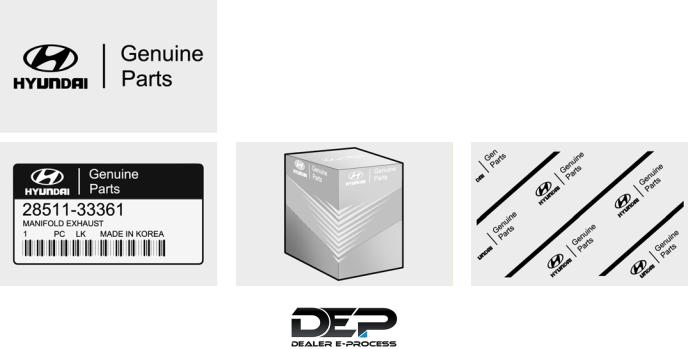
GUIDE TO HYUNDAI GENUINE PARTS
1.What are HYUNDAI Genuine Parts?
HYUNDAI Genuine Parts are the same parts used by HYUNDAI Motor Company to manufacture vehicles. They are designed and tested for the optimum safety, performance, and reliability to our customers.
2.Why should you use genuine parts?
HYUNDAI Genuine Parts are engineered and built to meet rigid manufacturing requirements.
Damage caused by using imitation, counterfeit or used salvage parts is not covered under the HYUNDAI New Vehicle Limited Warranty or any other HYUNDAI warranty.
In addition, any damage to or failure of HYUNDAI Genuine Parts caused by the installation or failure of an imitation, counterfeit or used salvage part is not covered by any HYUNDAI Warranty.
3.How can you tell if you are purchasing HYUNDAI Genuine Parts?
Look for the HYUNDAI Genuine Parts Logo on the package (see below).
HYUNDAI Genuine Parts exported to the U.S. are packaged with labels written only in English.
HYUNDAI Genuine Parts are only sold through authorized HYUNDAI Dealerships.
F5
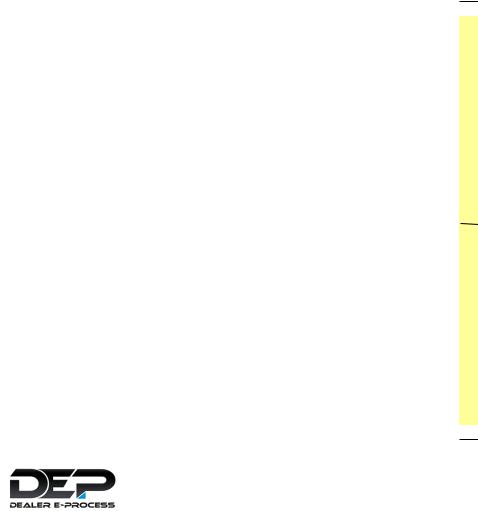

Introduction
How to use this manual / Fuel requirements / Vehicle break-in process / Vehicle data collection and event data recorders
Your vehicle at a glance
Exterior overview / Interior overview / Instrument panel overview / Engine compartment

 1
1

 2
2
Safety features of your vehicle |
|
3 |
Seats / Seat belts / Child restraint system / Air bag |
|
|
|
|
|
Features of your vehicle
Keys / Door locks / Trunk / Windows / Hood / Fuel filler lid / Sunroof / Steering wheel / Mirrors /
Instrument cluster / Lighting / Wipers & Washers / Climate control system / Audio system / Etc.
table of contents |
Driving your vehicle |
|
Before driving / Engine start/stop button / Transaxle / Brake system / Cruise control system /
Active ECO system / Winter driving / Vehicle load limit / Etc.
What to do in an emergency
Road warning / Emergency while driving / Emergency starting / Engine overheat / TPMS / Flat tire / Towing / Etc.
Maintenance
Engine compartment / Maintenance service / Engine oil / Engine coolant / Brake fluid / Washer fluid /
Parking brake / Air cleaner / Wiper blades / Battery / Tire and wheels / Fuses / Light bulbs / Etc.
Specifications, Consumer information and Reporting safety defects
Index

 4
4

 5
5

 6
6

 7
7

 8
8
I

UD(FL) HMA 1.QXP 8/28/2014 5:02 PM Page 1
Introduction
. . . . . . . . . . . . . . . . . . . . . .How to use this manual |
1-2 |
1 |
Fuel requirements . . . . . . . . . . . . . . . . . . . . . . . . . . |
1-3 |
|
• Gasoline containing alcohol and methanol. . . . . . . . . 1-3
• Other fuels . . . . . . . . . . . . . . . . . . . . . . . . . . . . . . . . . . . 1-4
• Gasoline containing MMT . . . . . . . . . . . . . . . . . . . . . . 1-4
• Do not use methanol . . . . . . . . . . . . . . . . . . . . . . . . . . . 1-4
• Fuel Additives . . . . . . . . . . . . . . . . . . . . . . . . . . . . . . . . 1-4
Vehicle break-in process . . . . . . . . . . . . . . . . . . . . . 1-5 Vehicle data collection and event data recorders . 1-6
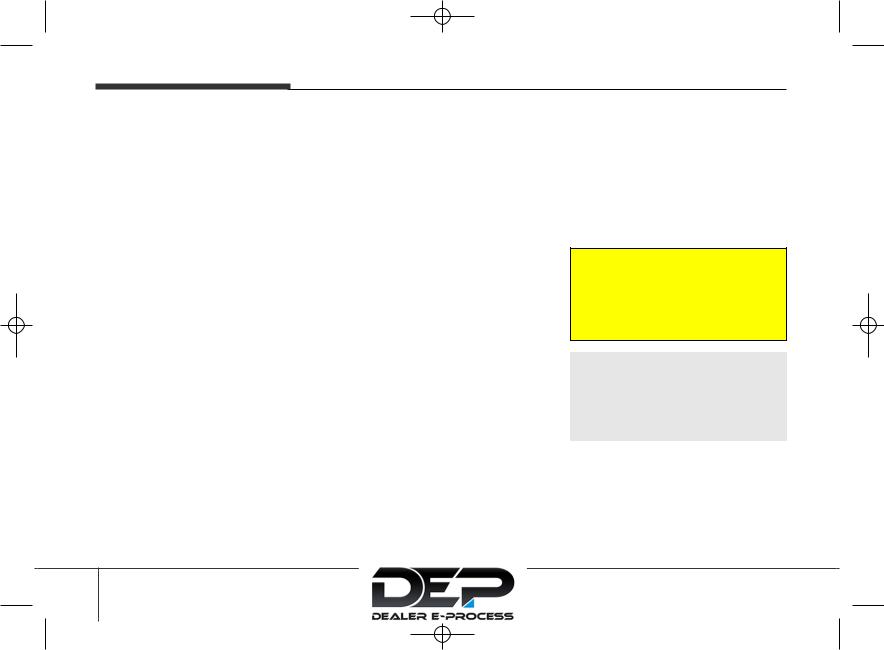
UD(FL) HMA 1.QXP 8/28/2014 5:02 PM Page 2
Introduction
HOW TO USE THIS MANUAL
We want to help you get the greatest possible driving pleasure from your vehicle. Your Owner’s Manual can assist you in many ways. We strongly recommend that you read the entire manual. In order to minimize the chance of death or injury, you must read the WARNING and CAUTION sections in this manual.
Illustrations complement the words in this manual to best explain how to enjoy your vehicle. By reading your manual, you will learn about features, important safety information, and driving tips under various road conditions.
The general layout of the manual is provided in the Table of Contents. A good place to start is the index; it has an alphabetical listing of all information in your manual.
Sections: This manual has eight chapters plus an index. Each chapter begins with a brief list of contents so you can tell at a glance if that chapter has the information you want.
You will find various WARNINGs, CAUTIONs, and NOTICEs in this manual. These WARNINGs were prepared to enhance your personal safety. You should carefully read and follow ALL procedures and recommendations provided in these WARNINGS, CAUTIONS and NOTICES.
 WARNING
WARNING
A WARNING indicates a situation in which harm, serious bodily injury, or death could result if the warning is ignored.
 CAUTION
CAUTION
A CAUTION indicates a situation in which damage to your vehicle could result if the caution is ignored.
NOTICE
A NOTICE indicates interesting or helpful information is being provided.
1 2
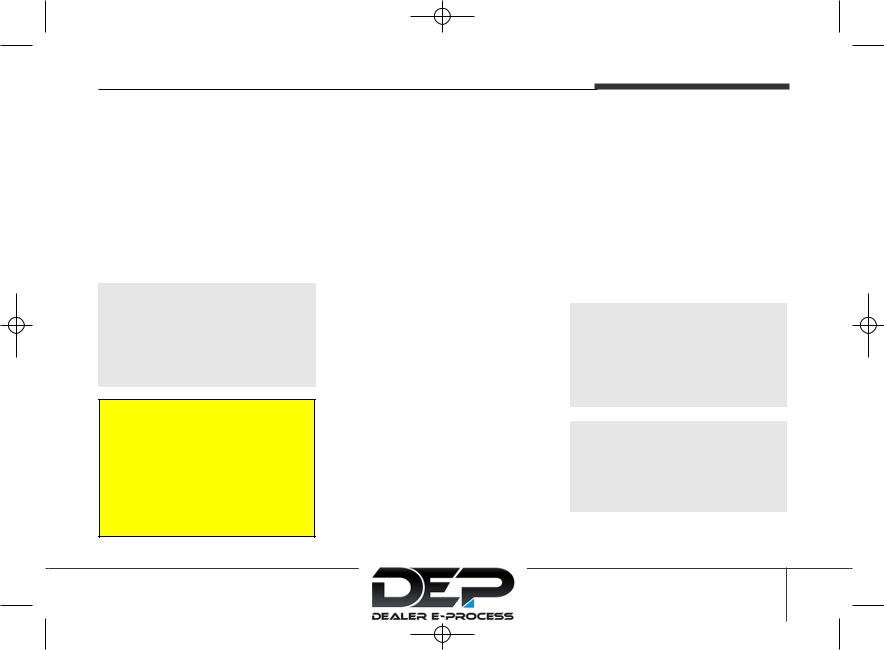
UD(FL) HMA 1.QXP 8/28/2014 5:02 PM Page 3
FUEL REQUIREMENTS
Your new vehicle is designed to use only unleaded fuel having a pump octane number ((R+M)/2) of 87 or higher. (Do not use methanol blended fuels.)
Your new vehicle is designed to obtain maximum performance with UNLEADED FUEL, as well as minimize exhaust emissions and spark plug fouling.
 CAUTION
CAUTION
Never add any fuel system cleaning agents to the fuel tank other than what has been specified. (Consult an authorized HYUNDAI dealer for details.)
 WARNING
WARNING
•Do not "top off" after the nozzle automatically shuts off when refueling.
•Always check that the fuel cap is installed securely to prevent fuel spillage in the event of an accident.
Introduction
Gasoline containing alcohol and methanol
Gasohol, a mixture of gasoline and ethanol (also known as grain alcohol), and gasoline or gasohol containing methanol (also known as wood alcohol) are being marketed along with or instead of leaded or unleaded gasoline.
Do not use gasohol containing more than 10% ethanol, and do not use gasoline or gasohol containing any methanol. Either of these fuels may cause drivability problems and damage to the fuel system, engine control system and emission control system.
Discontinue using gasohol of any kind if drivability problems occur.
Vehicle damage or drivability problems may not be covered by the manufacturer’s warranty if they result from the use of:
1.Gasohol containing more than 10% ethanol.
2.Gasoline or gasohol containing methanol.
3.Leaded fuel or leaded gasohol.
"E85" fuel is an alternative fuel comprised of 85 percent ethanol and 15 percent gasoline, and is manufactured exclusively for use in Flexible Fuel Vehicles. “E85” is not compatible with your vehicle. Use of “E85” may result in poor engine performance and damage to your vehicle's engine and fuel system. HYUNDAI recommends that customers do not use fuel with an ethanol content exceeding 10 percent.
 CAUTION
CAUTION
Your New Vehicle Limited Warranty does not cover damage to the fuel system or any performance problems caused by the use of “E85” fuel.
 CAUTION
CAUTION
Never use gasohol which contains methanol. Discontinue use of any gasohol product which impairs driveability.
1 3

UD(FL) HMA 1.QXP 8/28/2014 5:02 PM Page 4
Introduction
Other fuels
Using fuels such as,
-Silicone (Si) contained fuel,
-Ferrocene (Fe) contained fuel, and
-Other metallic additives contained fuels,
may cause vehicle and engine damage. Also the Malfunction Indicator Lamp (MIL) may illuminate or cause plugging, misfiring, poor acceleration, engine stalling, catalyst melting, abnormal corrosion, life cycle reduction, etc.
NOTICE
Damage to the fuel system or performance problem caused by the use of these fuels may not be covered by your New Vehicle Limited Warrenty.
Gasoline containing MMT
Some gasoline contains harmful man- ganese-based fuel additives such as MMT (Methylcyclopentadienyl Man- ganese Tricarbonyl).
HYUNDAI does not recommend the use of gasoline containing MMT. This type of fuel can reduce vehicle performance and affect your emission control system.
The malfunction indicator lamp on the cluster may come on.
Do not use methanol
Fuels containing methanol (wood alcohol) should not be used in your vehicle. This type of fuel can reduce vehicle performance and damage components of the fuel system, engine control system and emission control system.
 CAUTION
CAUTION
Your New Vehicle Limited Warranty may not cover damage to the fuel system and any performance problems that are caused by the use of fuels containing methanol.
Fuel Additives
HYUNDAI recommends that you use good quality gasolines treated with detergent additives such as TOP TIER Detergent Gasoline, which help prevent deposit formation in the engine. These gasolines will help the engine run cleaner and enhance performance of the Emission Control System. For more information on TOP TIER Detergent Gasoline, please go to the website (www.toptiergas.com). For customers who do not use TOP Tier Detergent Gasoline regularly, and have problems starting or the engine does not run smoothly, additives that you can buy separately may be added to the gasoline. If TOP TIER Detergent Gasoline is not available, one bottle of additive added to the fuel tank at every 7,500 miles or every engine oil change is recommended. Additives are available from your authorized HYUNDAI dealer along with information on how to use them. Do not mix other additives.
1 4
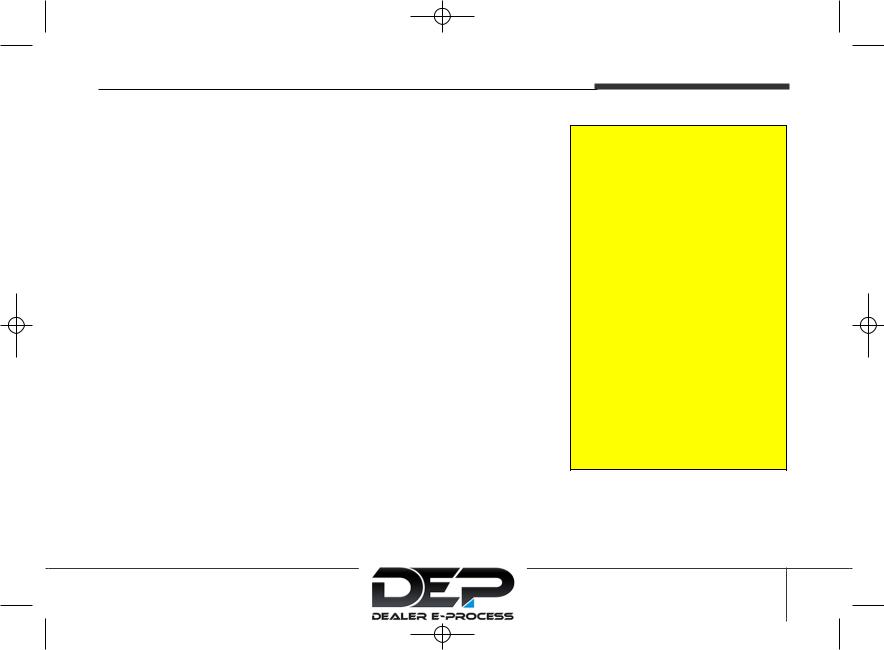
UD(FL) HMA 1.QXP 8/28/2014 5:02 PM Page 5
Operation in foreign countries
If you are going to drive your vehicle in another country, be sure to:
•Observe all regulations regarding registration and insurance.
•Determine that acceptable fuel is available.
Introduction
VEHICLE BREAK-IN PROCESS
No special break-in period is needed. By following a few simple precautions for the first 600 miles (1,000 km) you may add to the performance, economy and life of your vehicle.
•Do not race the engine.
•While driving, keep your engine speed (rpm, or revolutions per minute) between 2,000 rpm and 4,000 rpm.
•Do not maintain a single speed for long periods of time, either fast or slow. Varying engine speed is needed to properly break-in the engine.
•Avoid hard stops, except in emergencies, to allow the brakes to seat properly.
 CALIFORNIA PROPOSITION 65 WARNING
CALIFORNIA PROPOSITION 65 WARNING
Items contained in motor vehicles or emitted from them are known to the State of California to cause cancer and birth defects or reproductive harm.
These include:
•Gasoline and its vapors
•Engine exhaust
•Used engine oil
•Interior passenger compartment components and materials
•Component parts which are subject to heat and wear
In addition, battery posts, terminals and related accessories contain lead, lead compounds and other chemicals known to the State of California to cause cancer and reproductive harm.
1 5
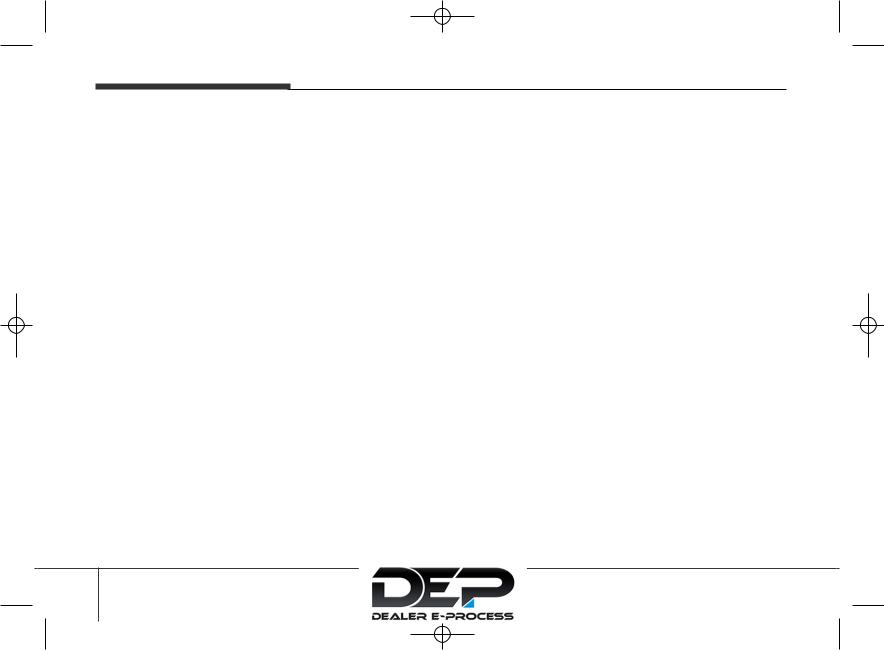
UD(FL) HMA 1.QXP 8/28/2014 5:02 PM Page 6
Introduction
VEHICLE DATA COLLECTION AND EVENT DATA RECORDERS
This vehicle is equipped with an event data recorder (EDR). The main purpose of an EDR is to record, in certain crash or near crash-like situations, such as an air bag deployment or hitting a road obstacle, data that will assist in understanding how a vehicle's systems performed. The EDR is designed to record data related to vehicle dynamics and safety systems for a short period of time, typically 30 seconds or less. The EDR in this vehicle is designed to record such data as:
•How various systems in your vehicle were operating;
•Whether or not the driver and passenger safety belts were buckled/fastened;
•How far (if at all) the driver was depressing the accelerator and/or brake pedal; and,
•How fast the vehicle was traveling.
These data can help provide a better understanding of the circumstances in which crashes and injuries occur. NOTE: EDR data are recorded by your vehicle only if a non-trivial crash situation occurs; no data are recorded by the EDR under normal driving conditions and no personal data (e.g., name, gender, age, and crash location) are recorded. However, other parties, such as law enforcement, could combine the EDR data with the type of personally identifying data routinely acquired during a crash investigation.
To read data recorded by an EDR, special equipment is required, and access to the vehicle or the EDR is needed. In addition to the vehicle manufacturer, other parties, such as law enforcement, that have the special equipment, can read the information if they have access to the vehicle or the EDR.
1 6

Your vehicle at a glance
. . . . .....................Exterior overview (front)I |
2-2 |
|
|
Exterior overview (rear)II. . . . ............. .. .. .. .. .. .. .. .. |
2-3 |
|
|
Interior overview |
2-4 |
|
|
2 |
|||
Instrument panel overview ................... |
2-5 |
||
Engine compartment ........................ |
2-6 |
|
|
|
|
|

Your vehicle at a glance
EXTERIOR OVERVIEW I
■ Front
1. Hood...................................................... |
4-29 |
6. Tires and wheels .................................. |
7-47 |
|
2. Windows ................................................ |
4-24 |
7. |
Headlight .............................................. |
7-76 |
3. Sunroof* ................................................ |
4-34 |
8. |
Fog light* .............................................. |
7-80 |
4. Removable towing hook* ...................... |
6-29 |
9. |
Side repeater light*................................ |
7-80 |
5. Wiper blade .......................................... |
7-41 |
*: if equipped |
|
|
OMD014005N
2 2
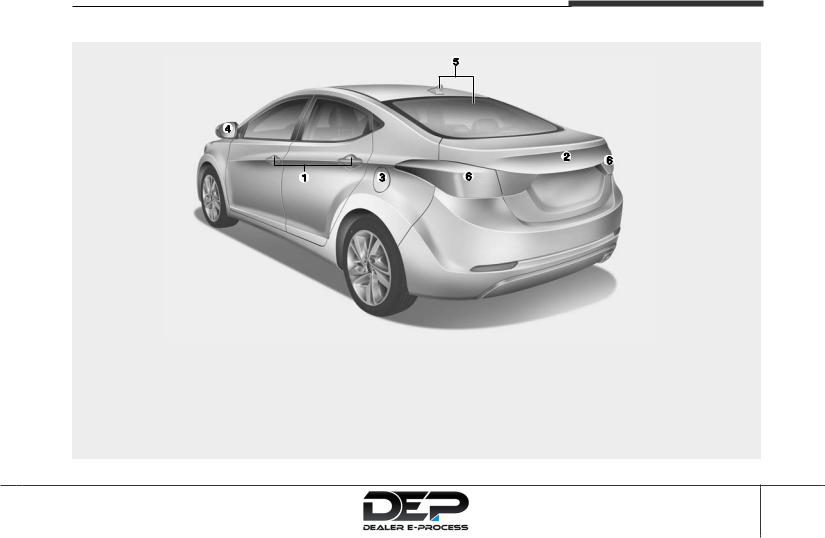
Your vehicle at a glance
EXTERIOR OVERVIEW II
■ Rear
1. |
Door lock .............................................. |
4-14 |
4. Outside rearview mirror |
........................4-48 |
2. Trunk...................................................... |
4-21 |
5. Antenna .............................................. |
4-120 |
|
3. |
Fuel filler lid .......................................... |
4-31 |
6. Rear combination lamp ........................ |
7-81 |
OMD014006N
2 3

Your vehicle at a glance
INTERIOR OVERVIEW
1. |
Inside door handle............................. |
4-16 |
2. |
Outside rearview mirror control |
|
|
switch* ............................................... |
4-49 |
3. |
Central door lock switch .................... |
4-17 |
4. Power window lock switch*................ |
4-27 |
|
5. Power window switches..................... |
4-24 |
|
6. |
Hood release lever ............................ |
4-29 |
7. Active ECO ........................................ |
5-41 |
|
8. |
Instrument panel illumination............. |
4-52 |
9. |
ESC (Electronic Stability Control) |
|
|
OFF button ........................................ |
5-34 |
10. Fuse box........................................... |
7-64 |
|
11. Brake pedal ..................................... |
5-29 |
|
12. Accelerator pedal ..................... |
5-8, 5-15 |
|
13. Trunk lid release lever...................... |
4-21 |
|
14. Fuel filler door opener ..................... |
4-31 |
|
15. Steering wheel................................. |
4-38 |
|
16. Steering wheel tilt lever ................... |
4-39 |
|
17. Inside rearview mirror...................... |
4-42 |
|
*: if equipped |
|
|
OMD014001N
2 4

Your vehicle at a glance
INSTRUMENT PANEL OVERVIEW
1. |
Instrument cluster.............................. |
|
4-51 |
|
2. Horn................................................... |
|
4-41 |
||
3. |
Driver’s front air bag .......................... |
|
3-47 |
|
4. |
Light control/Turn signals ......... |
4-72, 4-75 |
||
5. Wiper/Washer .................................... |
|
4-81 |
||
6. |
Key ignition switch*/ |
|
|
|
|
Engine start/stop button*.............. |
|
5-5, 5-9 |
|
7. |
Cruise control switch*........................ |
|
5-43 |
|
8. |
Audio remote control*...................... |
|
4-121 |
|
9. |
Digital clock ..................................... |
|
4-113 |
|
10. |
Audio controls* ................... |
4-135, 4-187 |
||
11. |
Hazard warning flasher switch |
..........6-2 |
||
12. Climate control system........... |
4-84, 4-94 |
|||
13. |
Shift lever ............................... |
5-18, 5-22 |
||
14. |
Parking brake .................................. |
|
5-30 |
|
15. |
Passenger’s front air bag................. |
|
3-47 |
|
16. Glove box....................................... |
|
4-111 |
||
17. Seat warmer*................................... |
|
3-19 |
||
18. Cup holder..................................... |
|
4-115 |
||
* : if equipped |
|
|
||
The actual instrument panel in the vehicle may differ from the illustration.
OMD014002N
2 5
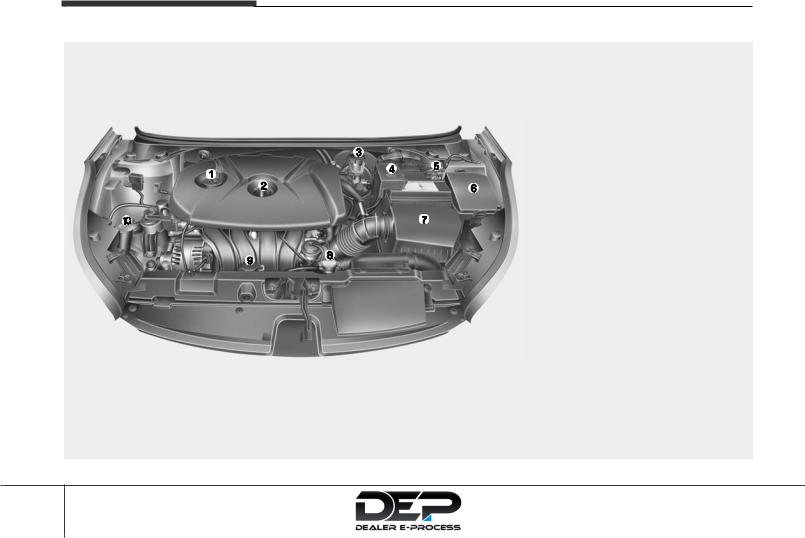
Your vehicle at a glance
ENGINE COMPARTMENT
1. |
Engine oil filler cap ............................ |
7-31 |
2. |
Engine oil dipstick.............................. |
7-30 |
3. |
Brake/clutch fluid reservoir ................ |
7-35 |
4. |
Positive battery terminal .................... |
7-43 |
5. |
Negative battery terminal .................. |
7-43 |
6. Fuse box............................................ |
7-66 |
|
7. |
Air cleaner ......................................... |
7-37 |
8. |
Radiator cap ...................................... |
7-32 |
9. |
Engine coolant reservoir.................... |
7-33 |
10. Windshield washer fluid reservoir.... |
7-36 |
|
The actual engine compartment in the vehicle may differ from the illustration.
OMD070047N
2 6

Safety features of your vehicle
Important safety precautions . . . . . . . . . . . . . . . . . 3-2
• Always wear your seat belt . . . . . . . . . . . . . . . . . . . . . 3-2
• Restrain all children . . . . . . . . . . . . . . . . . . . . . . . . . . . 3-2
• Air bag hazards . . . . . . . . . . . . . . . . . . . . . . . . . . . . . . . 3-2
• Driver distraction . . . . . . . . . . . . . . . . . . . . . . . . . . . . . 3-2
• Control your speed . . . . . . . . . . . . . . . . . . . . . . . . . . . . 3-3
• Keep your vehicle in safe condition . . . . . . . . . . . . . . . 3-3
Seats . . . . . . . . . . . . . . . . . . . . . . . . . . . . . . . . . . . . . . 3-4
• Safety precautions . . . . . . . . . . . . . . . . . . . . . . . . . . . |
. 3-5 |
• Front seats . . . . . . . . . . . . . . . . . . . . . . . . . . . . . . . . . . |
. 3-6 |
• Rear seats . . . . . . . . . . . . . . . . . . . . . . . . . . . . . . . . . . |
3-12 |
• Headrest . . . . . . . . . . . . . . . . . . . . . . . . . . . . . . . . . . . |
3-15 |
• Seat warmers . . . . . . . . . . . . . . . . . . . . . . . . . . . . . . . |
3-19 |
Seat belts . . . . . . . . . . . . . . . . . . . . . . . . . . . . . . . . |
3-21 |
• Seat belt safety precautions . . . . . . . . . . . . . . . . . . . . |
3-21 |
• Seat belt warning light . . . . . . . . . . . . . . . . . . . . . . . . |
3-22 |
• Seat belt restraint system . . . . . . . . . . . . . . . . . . . . . |
3-23 |
• Additional seat belt safety precautions . . . . . . . . . . |
3-29 |
• Care of seat belts . . . . . . . . . . . . . . . . . . . . . . . . . . . . |
3-32 |
Child restraint system (CRS) . . . . . . . . . . . . . . . . 3-34
• Selecting a Child Restraint System (CRS) . . . . . . . . 3-35
• Installing a Child Restraint System (CRS). . . . . . . . 3-37
Air bag - advanced supplemental restraint
system . . . . . . . . . . . . . . . . . . . . . . . . . . . . . . . . . . 3-45
• Where are the air bags? . . . . . . . . . . . . . . . . . . . . . . |
3-47 |
|
• SRS components and functions . . . . . . . . . . . . . . . . . |
3-50 |
|
• What to expect after an air bag inflates . . . . . . . . . |
3-54 |
|
• Occupant Classification System (OCS) . . . . . . . . |
3-55 |
|
. . .• Why Didn’t My Air Bag Go Off in a Collision? |
3-60 |
3 |
• SRS care . . . . . . . . . . . . . . . . . . . . . . . . . . . . . . . . . . . |
3-65 |
|
• Additional safety precautions . . . . . . . . . . . . . . . . . . |
3-66 |
|
|
||
• Air bag warning labels . . . . . . . . . . . . . . . . . . . . . . . . |
3-67 |
|

Safety features of your vehicle
IMPORTANT SAFETY PRECAUTIONS
You will find many safety precautions and recommendations throughout this section, and throughout this manual.The safety precautions in this section are among the most important.
Always wear your seat belt
A seat belt is your best protection in all types of accidents. Air bags are designed to supplement seat belts, not replace them. So even though your vehicle is equipped with air bags, ALWAYS make sure you and your passengers wear your seat belts, and wear them properly.
Restrain all children
All children under age 13 should ride in your vehicle properly restrained in a rear seat, not the front seat. Infants and small children should be restrained in an appropriate child restraint. Larger children should use a booster seat with the lap/shoulder belt until they can use the seat belt properly without a booster seat.
Air bag hazards
While air bags can save lives, they can also cause serious or fatal injuries to occupants who sit too close to them, or who are not properly restrained. Infants, young children, and shorter adults are at the greatest risk of being injured by an inflating air bag. Follow all instructions and warnings in this manual.
Driver distraction
Driver distraction presents a serious and potentially deadly danger, especially for inexperienced drivers. Safety should be the first concern when behind the wheel and drivers need to be aware of the wide array of potential distractions, such as drowsiness, reaching for objects, eating, personal grooming, other passengers, and using cellular phones, to name a few.
Drivers can become distracted when they take their eyes and attention off the road or their hands off the wheel to focus on activities other than driving. To reduce your risk of distraction or getting into an accident:
•ALWAYS set up your mobile devices (i.e., MP3 players, phones, navigation units, etc.) when your vehicle is parked or safely stopped.
•ONLY use your mobile device when allowed by laws and when conditions permit safe use. NEVER text or email while driving. Most states have laws prohibiting drivers from texting. Some states and cities also prohibit drivers from using handheld phones.
3 2
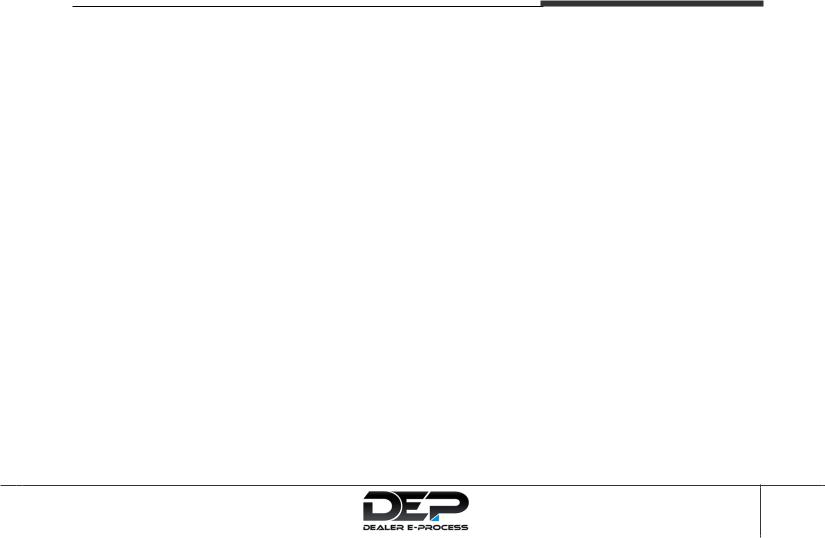
Safety features of your vehicle
•NEVER let the use of a mobile device distract you from driving. You have a responsibility to your passengers and others on the road to always drive safely, with your hands on the wheel as well as your eyes and attention on the road.
Control your speed
Excessive speed is a major factor in crash injuries and deaths. Generally, the higher the speed, the greater the risk, but serious injuries can also occur at lower speeds. Never drive faster than is safe for current conditions, regardless of the maximum speed posted.
Keep your vehicle in safe condition
Having a tire blowout or a mechanical failure can be extremely hazardous. To reduce the possibility of such problems, check your tire pressures and condition frequently, and perform all regularly scheduled maintenance.
3 3
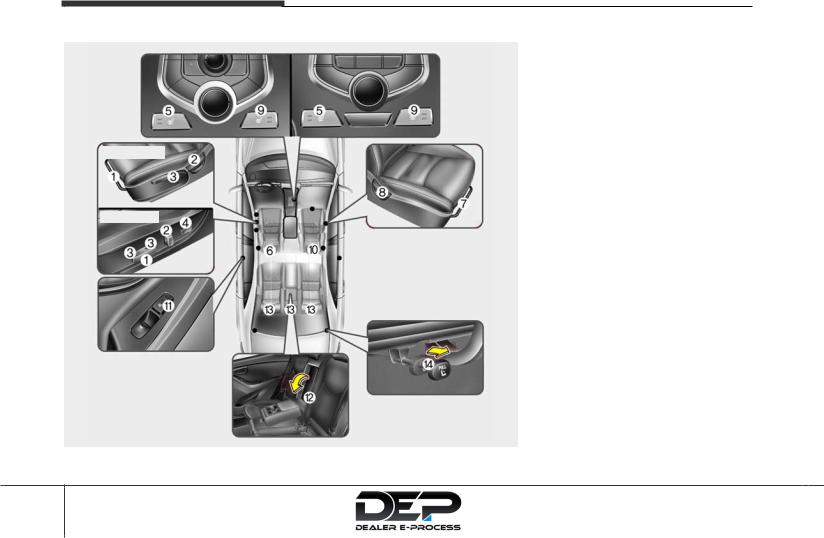
Safety features of your vehicle
SEATS
■ Type A |
|
■ Type B |
■Manual seat
■Power seat
OUD034001N
Driver’s seat
(1)Seat adjustment, forward/rearward
(2)Seatback recliner
(3)Seat adjustment, height
(4)Lumbar support*
(5)Seat warmer*
(6)Headrest adjustment
Front passenger seat
(7)Seat adjustment, forward/rearward
(8)Seatback recliner
(9)Seat warmer*
(10)Headrest adjustment
Rear seat
(11)Seat warmer*
(12)Armrest
(13)Headrest adjustment
(14)Seat back folding knob (trunk)* * : if equipped
3 4

Safety precautions
Adjusting the seats so that you are sitting in a safe, comfortable position plays an important role in driver and passenger safety together with the seat belts and air bags in an accident.
 WARNING
WARNING
Do not use a cushion that reduces friction between the seat and the passenger. The passenger's hips may slide under the lap portion of the seat belt during an accident or a sudden stop. Serious or fatal internal injuries could result because the seat belt cannot operate normally.
Air bags
You can take steps to reduce the risk of being injured by an inflating air bag. Sitting too close to an air bag greatly increases the risk of injury in the event the air bag inflates.
The National Highway Traffic Safety Administration (NHTSA) recommends that drivers allow at least 10 inches (25 cm) between the center of the steering wheel and their chest.
 WARNING
WARNING
To reduce the risk of serious injury or death from an inflating air bag, take the following precautions:
•Adjust the driver’s seat as far to the rear as possible while maintaining the ability to maintain full control of the vehicle.
•Adjust the front passenger seat as far to the rear as possible.
•Hold the steering wheel by the rim with hands at the 9 o’clock and 3 o’clock positions to minimize the risk of injuries to your hands and arms.
•NEVER place anything or anyone between the steering wheel and the air bag.
•Do not allow the front passenger to place feet or legs on the dashboard to minimize the risk of leg injuries.
Safety features of your vehicle
Seat belts
Always fasten your seat belt before starting any trip.
At all times, passengers should sit upright and be properly restrained. Infants and small children must be restrained in appropriate child restraint systems. Children who have outgrown a booster seat and adults must be restrained using the seat belts.
3 5
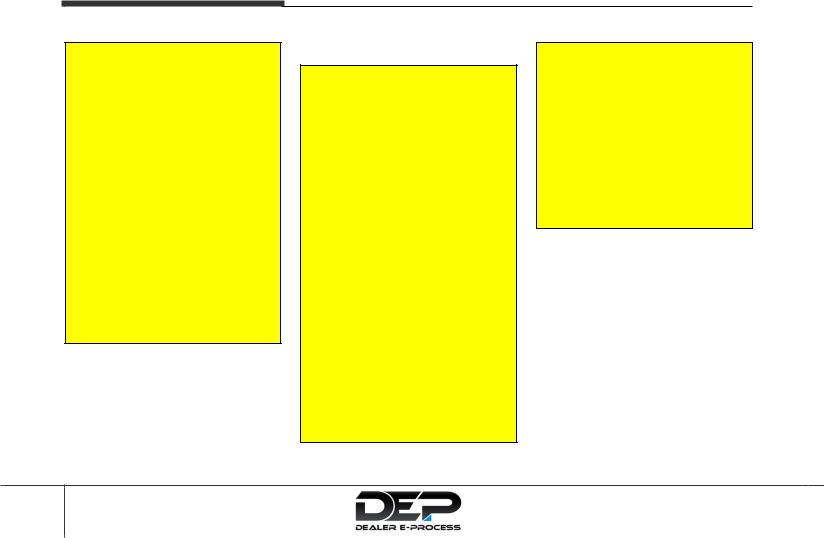
Safety features of your vehicle
 WARNING
WARNING
Take the following precautions when adjusting your seat belt:
•NEVER use one seat belt for more than one occupant.
•Always position the seatback upright with the lap portion of the seat belt snug and low across the hips.
•NEVER allow children or small infants to ride in a passenger’s lap.
•Do not route the seat belt across your neck, across sharp edges, or reroute the shoulder strap away from your body.
•Do not allow the seat belt to become caught or jammed.
Front seats
 WARNING
WARNING
Take the following precautions when adjusting your seat:
•NEVER attempt to adjust the seat while the vehicle is moving. The seat could respond with unexpected movement and may cause loss of vehicle control resulting in an accident.
•Do not place anything under the front seats. Loose objects in the driver’s foot area could interfere with the operation of the foot pedals, causing an accident.
•Do not allow anything to interfere with the normal position and proper locking of the seatback.
•Do not place a cigarette lighter on the floor or seat. When you operate the seat, gas may exit out of the lighter causing a fire.
 WARNING
WARNING
To prevent injury:
•Do not adjust your seat while wearing your seat belt. Moving the seat cushion forward may cause strong pressure on your abdomen.
•Do not allow your hands or fingers to get caught in the seat mechanisms while the seat is moving.
3 6

Safety features of your vehicle
Manual adjustment
OMD030002
Forward and rearward adjustment
To move the seat forward or rearward:
1.Pull up the seat slide adjustment lever and hold it.
2.Slide the seat to the position you desire.
3.Release the lever and make sure the seat is locked in place. Move forward and rearward without using the lever. If the seat moves, it is not locked properly.
OMD030003
Seatback angle
To recline the seatback:
1.Lean forward slightly and lift up the seatback lever.
2.Carefully lean back on the seat and adjust the seatback to the position you desire.
3.Release the lever and make sure the seatback is locked in place. (The lever MUST return to its original position for the seatback to lock.)
Reclining seatback
Sitting in a reclined position when the vehicle is in motion can be dangerous. Even when buckled up, the protection of your restraint system (seat belts and air bags) is greatly reduced by reclining your seatback.
 WARNING
WARNING
NEVER ride with a reclined seatback when the vehicle is moving.
Riding with a reclined seatback increases your chance of serious or fatal injuries in the event of a collision or sudden stop.
Drivers and passengers should ALWAYS sit well back in their seats, properly belted, and with the seatbacks upright.
3 7
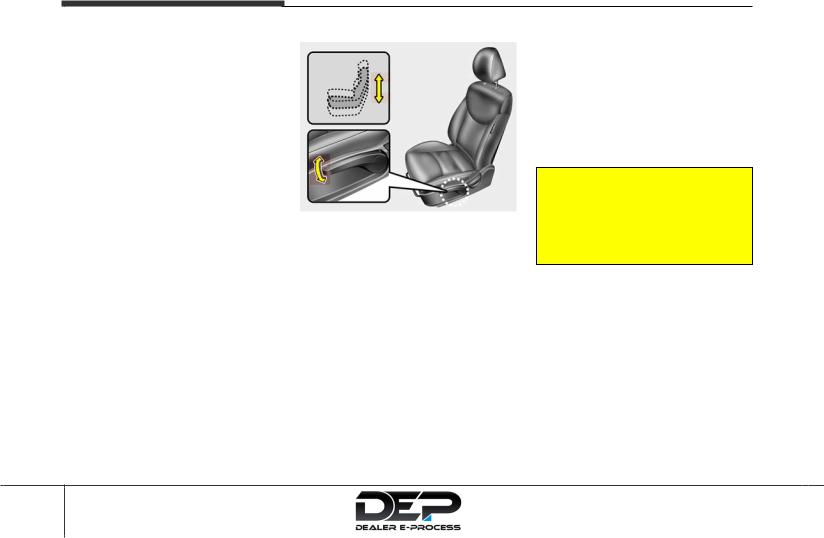
Safety features of your vehicle
Seat belts must be snug against your hips and chest to work properly. When the seatback is reclined, the shoulder belt cannot do its job because it will not be snug against your chest. Instead, it will be in front of you. During an accident, you could be thrown into the seat belt, causing neck or other injuries.
The more the seatback is reclined, the greater chance the passenger’s hips will slide under the lap belt or the passenger’s neck will strike the shoulder belt.
OMD030004
Seat cushion height (for driver’s seat)
To change the height of the seat cushion:
•Push down on the lever several times, to lower the seat cushion.
•Pull up on the lever several times, to raise the seat cushion.
Power adjustment
The front seat can be adjusted by using the control switches located on the outside of the seat cushion. Before driving, adjust the seat to the proper position so that you can easily control the steering wheel, foot pedals and controls on the instrument panel.
 WARNING
WARNING
NEVER allow children in the vehicle unattended. The power seats are operable when the engine is turned off.
3 8
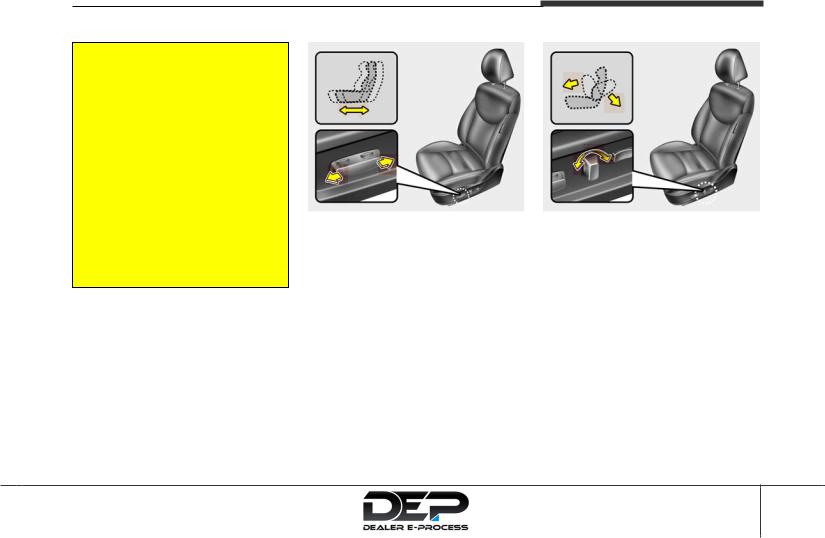
Safety features of your vehicle
 WARNING
WARNING
To prevent damage to the seats:
•Always stop adjusting the seats when the seat has been adjusted as far forward or rearward as possible.
•Do not adjust the seats longer than necessary when the engine is turned off. This may result in unnecessary battery drain.
•Do not operate two or more seats at the same time. This may result in an electrical malfunction.
OMD030006
Forward and rearward adjustment
To move the seat forward or rearward:
1.Push the control switch forward or rearward.
2.Release the switch once the seat reaches the desired position.
OMD030007
Seatback angle
To recline the seatback:
1.Push the control switch forward or rearward.
2.Release the switch once the seatback reaches the desired position.
3 9
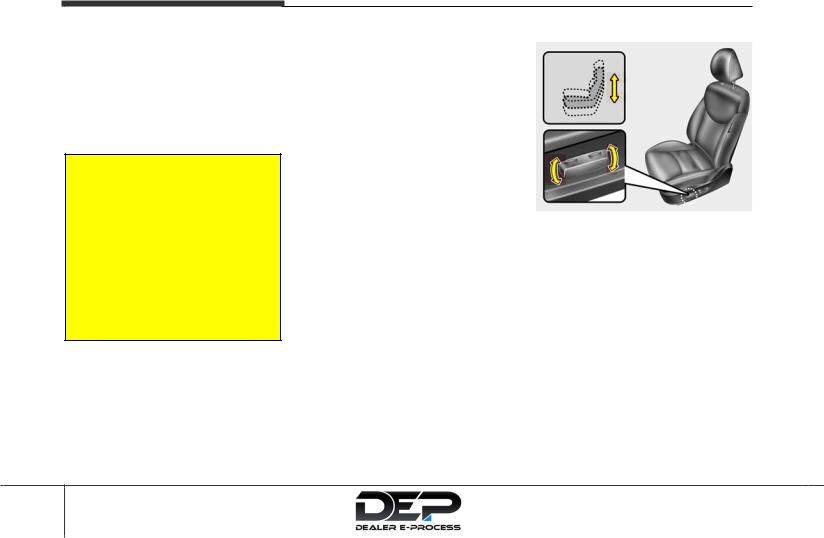
Safety features of your vehicle
Reclining seatback
Sitting in a reclined position when the vehicle is in motion can be dangerous. Even when buckled up, the protections of your restraint system (seat belts and air bags) is greatly reduced by reclining your seatback.
 WARNING
WARNING
NEVER ride with a reclined seatback when the vehicle is moving.
Riding with a reclined seatback increases your chance of serious or fatal injuries in the event of a collision or sudden stop.
Drivers and passengers should ALWAYS sit well back in their seats, properly belted, and with the seatbacks upright.
Seat belts must be snug against your hips and chest to work properly. When the seatback is reclined, the shoulder belt cannot do its job because it will not be snug against your chest. Instead, it will be in front of you. During an accident, you could be thrown into the seat belt, causing neck or other injuries.
The more the seatback is reclined, the greater chance the passenger’s hips will slide under the lap belt or the passenger’s neck will strike the shoulder belt.
OMD030008
Seat cushion height (for driver’s seat)
To change the height of the seat cushion:
1.Pull the front portion of the control switch up to raise or push down to lower the front part of the seat cushion. Pull the rear portion of the control switch up to raise or push down to lower the rear part of the seat cushion.
2.Release the switch once the seat reaches the desired position.
3 10
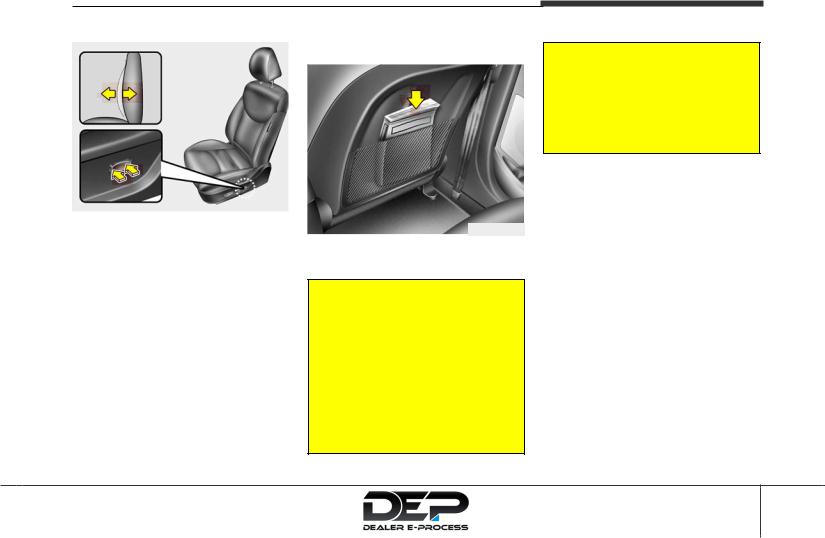
OMD030009
Lumbar support
(for driver’s seat, if equipped)
To adjust the lumbar support:
1.Press the front portion of the switch to increase support or the rear portion of the switch to decrease support.
2.Release the switch once it reaches the desired position.
Seatback pocket
OMD030013
The seatback pocket is provided on the back of the front seatbacks.
 WARNING
WARNING
To prevent the occupant classification system from malfunctioning:
•Do not place any items total weighing over 2.2 lbs (1 kg) in the seatback pocket on the passenger’s seat.
•Do not hang onto the front passenger’s seatback.
Safety features of your vehicle
 WARNING
WARNING
Do not put heavy or sharp objects in the seatback pockets. In an accident they could come loose from the pocket and injure occupants.
3 11
